Dental curettage is a procedure to remove accumulated plaque and tartar beneath the gum surface, i.e., from the tooth roots. Tartar is a fertile ground for bacterial development and should be removed as soon as possible to prevent inflammation progression.
If your gums are swollen and bleeding, it is most likely that tartar and bacteria have affected the deeper structures of the tooth's supportive part. If this condition is ignored and inflammation (periodontitis) progresses, the stability and health of your teeth are seriously jeopardized. To avoid tooth loss, it's essential to respond promptly. One of the procedures used to treat inflammation of the deep parts of the tooth's support apparatus is dental curettage.
Curettage Procedure
The procedure is performed with special instruments whose aim is to remove tartar and bacteria from the tooth root surface. It is performed under local anesthesia, so the procedure is painless. It can be performed on an individual tooth, a group, or all teeth, depending on the area affected. At the end of the treatment, our dentist will disinfect the area with an antiseptic solution and prescribe antibiotics if there is an indication for it. They will also provide detailed instructions on maintaining oral hygiene since it is key to the results of therapy outcomes. The procedure lasts from 10-90 minutes depending on the number of teeth that need curettage.
After curettage, there is a possibility of tooth sensitivity to heat and cold, which should calm down over time, or if sensitivity is pronounced, a tooth desensitization procedure can be performed.
Depending on the part of the tissue removed during curettage, we distinguish two types of dental curettage:
- Gingival curettage or gum curettage - removal of inflamed and connective tissue of that part of the soft tissue lying lateral to the periodontal pocket, the gap between the tooth and the bone.
- Subgingival curettage - removal of periodontal pocket tissue and connective tissue above it, all the way to the end of the alveolar bone
Curettage cannot entirely remove the cause of periodontal infection and is always preceded by scraping and polishing the tooth roots.Before the procedure, the patient is given mild local anesthesia to make the procedure as painless as possible. The curettage itself is performed with an instrument called a curette.There are several types, depending on the side of the tooth being scraped.

